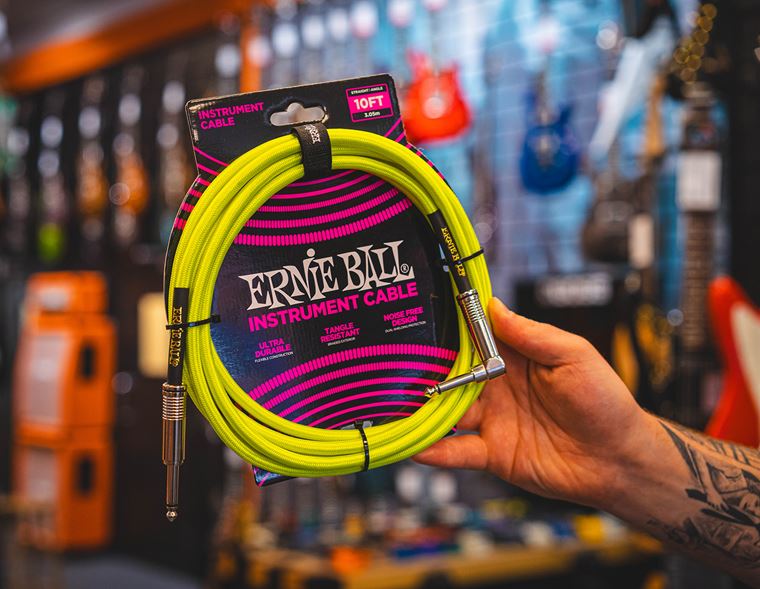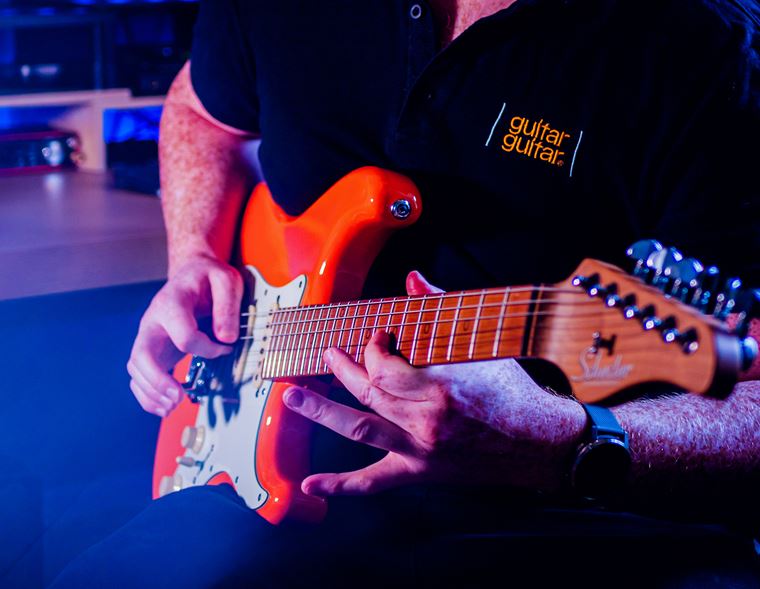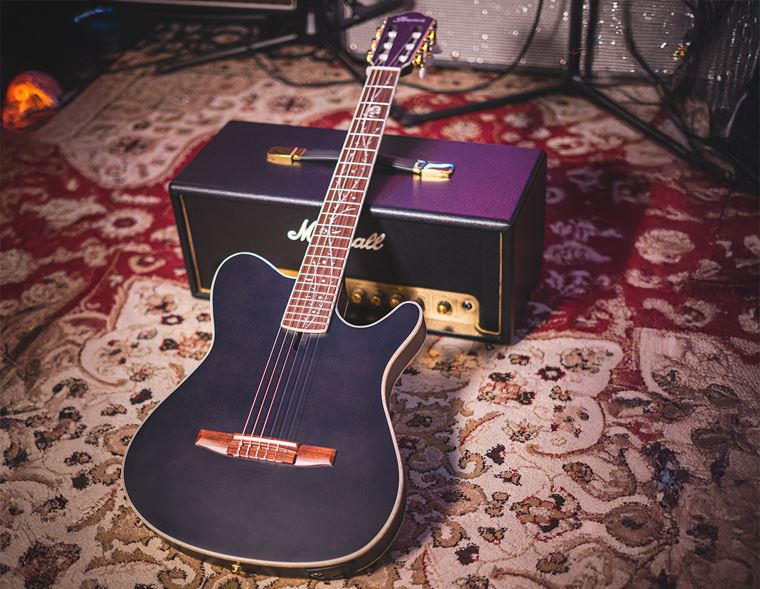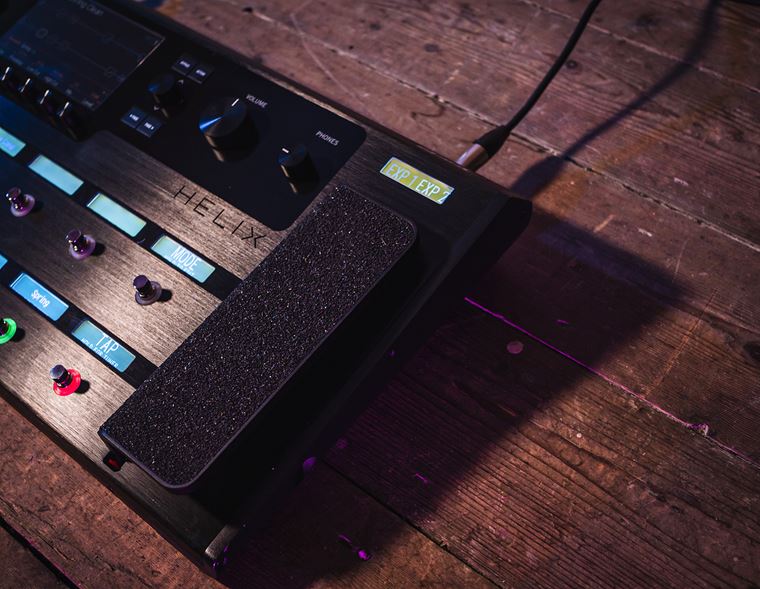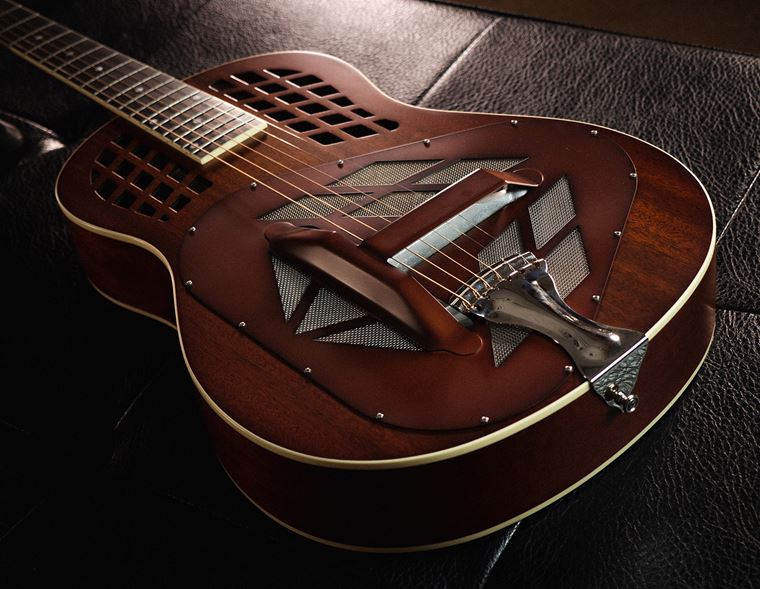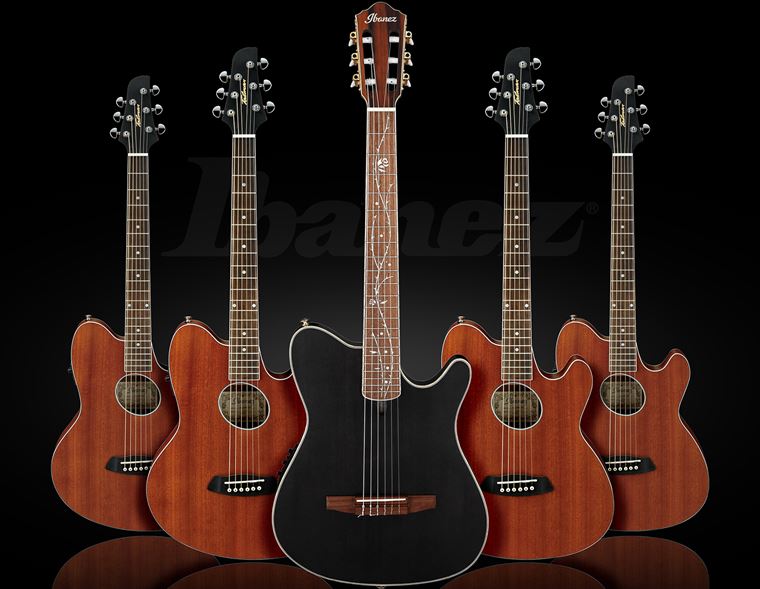Beginners Guide to Guitar Pedals (Updated for March 2025)
Welcome to another beginner-friendly blog! Today, I’m going to demystify the whole subject of guitar pedals. You want to get into the world of effects? Finding it all a bit overwhelming or confusing? Worry not! From even before my days at guitarguitar, I’ve been a real maniac for guitar pedals and effects in general, so I’m in a good position to help guide you through this whole subject.
Join me for the entire blog to gain all the insights you need, or use the contents section below to jump to a specific area you want to learn more about. Let’s have some fun!
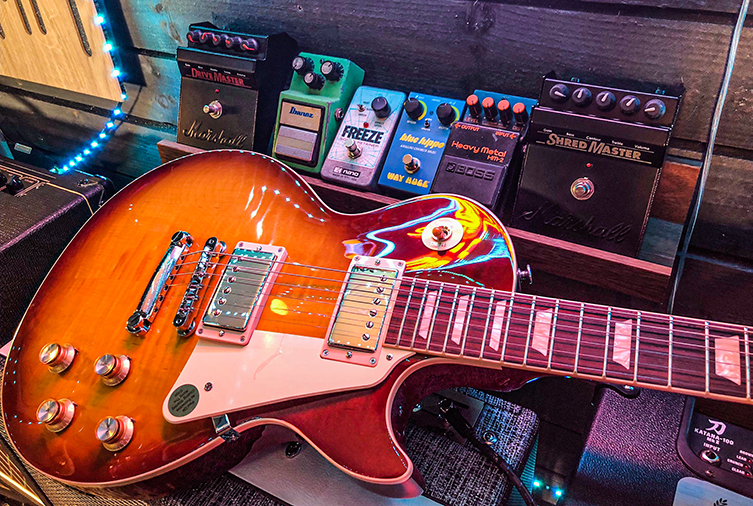
Contents
- What is a Guitar Pedal?
- Why Do I Need a Guitar Pedal?
- How Do I Use a Guitar Pedal?
- What are the Most Essential Guitar Pedals?
- How Do I Know What Pedals to Use?
- Does Guitar Pedal Order Matter?
- Popular Beginner Guitar Pedal Brands
- What Guitar Pedals Should I Buy?
- Have Fun!
What is a Guitar Pedal?
The first question is one that many guitar based bloggers take for granted: just what actually is a guitar pedal?
So, a guitar pedal (or effects pedal, as I’ll also refer to them) is an electronic device that is plugged in between your guitar and amplifier, and alters your sound in a way specified by how you set the pedals controls.
Guitar pedals come in all shapes and sizes, and whilst there are some definite ‘categories’ of effects, there are almost endless variations of those available. Even with, say, overdrive pedals, there are literally hundreds of options out there for you to choose from.
Guitar pedals come in two main types: single effects (also known as ‘stompboxes’ or ‘compact effects’) and multi-fx pedals.
Stompboxes tend to only have one sound (or at most, a few) on board, with dedicated controls to manipulate that sound.
Multi-fx units are larger and have several types of effect built in. There are a number of foot pedals and shred controls on these, which you use to select ‘patches’, which are different collections of sounds and settings that are stored in the unit’s memory.
Any time you listen to a piece of guitar playing, it’s relatively likely that the sound is being affected by a pedal of some description. Some pedals are subtle, others less so, whilst some guitar pedals have functions that affect your sound in an almost invisible way. We’ll look into this as we go!

Why Do I Need a Guitar Pedal?
There are many reasons why you might need a guitar pedal. The most obvious reason is that you want to make a particular sound with your guitar, and you can’t achieve that sound with just your guitar and amp. Often, you’ve heard a sound you like (off the top of my head, you might love Jimi Hendrix and want that ‘wah-wah’ sound) and want to be able to recreate that.
You may also want to jump between clean and heavy sounds, and your amp won’t allow that. A distortion pedal would let you do that, for instance.
Perhaps you’ve grown up listening to styles of music that use unorthodox guitar sounds. In this case, you’ll be interested in following a similar path and making effects pedals part of your sound as you learn.
For these reasons, and many more, you’ll find guitar pedals are the answer to your desires!
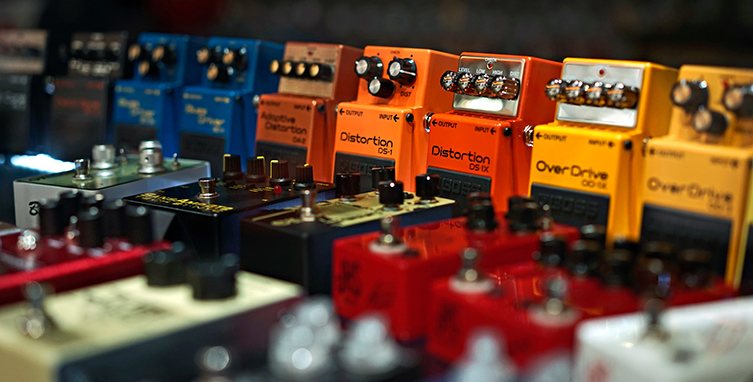
How Do I Use a Guitar Pedal?
In order for a guitar pedal to do its thing, it needs to be connected into your sound. There are two ways you can do this, and one of those ways is not particularly relevant to a lot of people, so I’ll just describe that in passing.
The main way to use your guitar pedal is to power it via either a battery (most, but not all, pedals accept battery power, normally in the form of a 9V PP3 square battery) or a power supply. Power supplies are a good idea generally, and particularly if you intend to use several pedals. More on that soon!
Once you have power for your pedal, the next step is to connect it. You need two ¼” jack cables (your regular guitar cable plus another just like it, basically) and you connect them like this:
Guitar - first cable into pedal’s input - second cable from pedal’s output - into amp
In fact, take a little look at this picture of a lovely Gibson Les Paul plugged into a Fuzz Face pedal, and then into a Supro amp. Two cables is all it takes!
In fact, have a look at this detailed pic of the Fuzz Face: you’ll notice the jack cables going into the appropriate input and outputs. The input is on the right hand side of the pedal, and the output on the right. This is generally how you’ll find all pedals are designed: right-to-left from guitar to amp.
Now, not all pedals look the same, and not all pedals have the same markings to indicate inputs and outputs. Let’s look at another one, this time with individual detailed photos for input, the output and the complete pedal showing both connections made. Not the ‘guitar’ and ‘amp’ marking in this Fender Blender pedal: unusual, but still conforming to a ‘right-to-left’ configuration from input to output.
Finally, let me show you an old BOSS pedal. BOSS are one of the biggest pedalmakers ever, and their design is very well known to guitarists. In fact, loads of other companies copy their iconic (and quite sensible) design, so it’s definitely worth being familiar with them.
BOSS pedals connect via the pedal’s sides, as opposed to the top. It’s still a right-to-left situation though, so the cable going into the right hand side is the input, with the left hand connection being the output. The power supply connects to the top, and the battery compartment is directly under the footswitch itself.
In terms of operating the pedal itself, there’s always a footswitch to press with your foot - this toggles the effect on and off - and a selection of control knobs and switches to set up your sound. Turn the dials until you like what you hear, and stomp on the footswitch to go between dry tone (the pedal is not on) to a ‘wet’ sound (the pedal is on or engaged so it is affecting the sound). Most pedals have an LED of some description to indicate the on/off status of the effect. It’s that simple!
What are the Most Essential Guitar Pedals?
So, what are the most essential pedals? That’s a tricky one. What do you want to do with your sound? In fact, one of the most essential pedals ever is one that doesn’t even make a sound! Indeed, if you only ever use one pedal, it should be a tuner. Yeah, I know, it’s maybe not the most instantly exciting purchase you could make, but an out of tune guitar during a public performance is an unforgivable error! Not only that, but you want to be developing your ear to recognise pitch, so being consistently in tune is an important factor.
That all said, there are a few types of pedals that I would definitely call ‘essential’, and just before I outline those, let me take a second to familiarise you with the terms associated with each type of effect:
- Overdrive/distortion: gain pedals, basically, which give you various versions of that ‘rock’ tone. Boosters, overdrives, distortions, fuzzes and high-gain distortions are all included here.
- Modulation: whooshy, wobbly, underwater or jet engine sounds here: phasers, flangers and choruses are the most common, alongside vibes (vibrato/univibe etc.), tremolo and similar effects.
- Time-based: reverb, echo and delay, mainly. Effects that add atmosphere to your tone and a sense of space.
- Pitch Effects: any pedals that alter the pitch of your guitar independently of the note your playing is a pitch effect. Pitch-shifters, octave pedals, harmonisers and whammy pedals are all pitch-based effects.
- Utility pedals: these are the ones that might not make a sound, but still play an important part in the bigger picture. Utility pedals include tuners, noise suppressors (they get rid of background noise and hiss) and compressors (squash your sound and smooth it out).
In terms of what is essential, I’d venture that in addition to a tuner, some form of overdrive and some type of time-based effect would be essential. For fun, I’d also vote to include a modulation pedal of some description.
I’ve used this group of choices in the following photo, to illustrate what I mean:
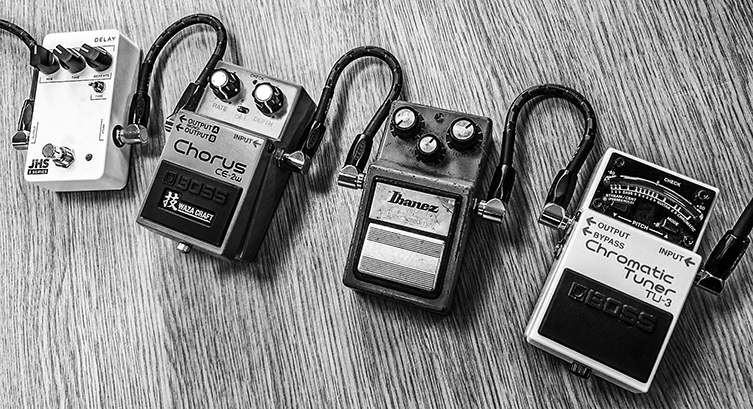
This selection of pedals gives you access to combinations of effects that will work in loads of genres and styles. These pedals cover the most ground, particularly if you choose an overdrive/distortion pedal with lots of versatility.
This subject leads onto my next topic: how will you know what pedals to use?
How Do I Know What Pedals to Use?
How indeed! How do you determine which pedals you want to use? Thankfully, there are lots of resources to take advantage of.
Firstly, I would recommend paying close attention to the music you love, and making a note of the guitar sounds you particularly like. The chances are, someone online will have sussed out what that guitarist was using, and you can then learn if any particular effects were involved. Jump down the online effects rabbithole and surprise yourself about how quickly you become well-informed.
Secondly, talk to other players - and that includes the staff in our stores - about what they use themselves. Everybody has opinions, and loads of people will be able to tell you cool stuff about pedals that you might not hear about otherwise.
Does Guitar Pedal Order Matter?
Guitar pedal order does indeed matter, yes. Your effect chain is a linear thing, with each additional effect changing what happens to each successive effect afterwards. For example, if you had, say, a phaser pedal only, you’d hear a nice, funky phaser effect over your clean guitar sound. Now, if you had a fuzz pedal ahead of your phaser (so guitar into fuzz, fuzz into phaser and phaser into amp), then the phaser would be significantly more pronounced and over-the-top sounding because the fuzz pedal is being fed through it. Does that make sense?
So there is an order, and that little chain I showed you earlier in the picture had them in the correct order. Let’s look at it again:
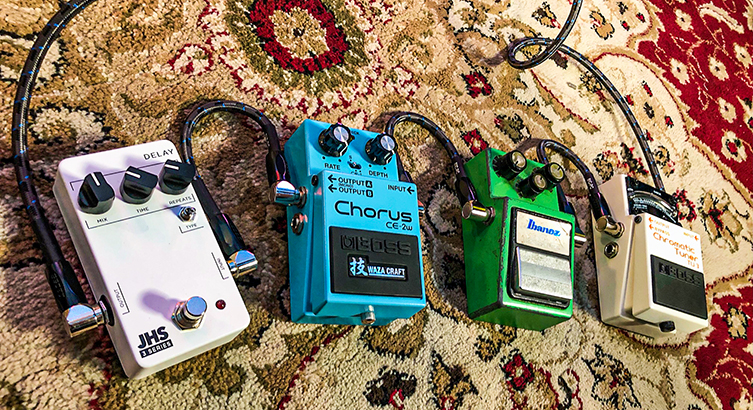
Remember, we work from right-to-left, so the tuner (first pedal) is on the far right. Generally speaking, the order of pedals goes like this:
Guitar - utility (context may change this one) - wah - pitch - overdrive/distortion - modulation - time-based - amplifier
Within these general guidelines, there is space to experiment. For example, if you decide to use both a reverb and a delay pedal (which is a very normal decision to make), then it’s up to you whether the reverb goes before or after the delay. I prefer reverb last, but that’s just me! The same goes for multiple modulation effects: if you can hear the difference between a phased chorus and a chorused phaser, then you’ll likely have an opinion on which one you prefer. Go with what works with you!
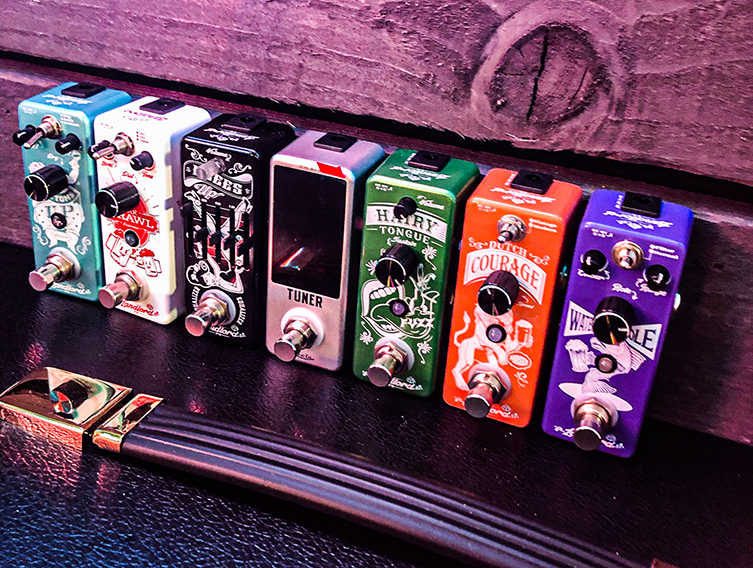
Popular Beginner Guitar Pedal Brands
As you’ll have seen from the effects section of our site, there’s more than a little bit of choice on there for pedals! The prices are as variable as the graphic finishes on the pedals themselves, but the good news is, there are many brands that offer guitar pedals for good prices.
At the very affordable end of the spectrum, Landlord FX offer lots. There’s a comprehensive selection of pedals from tuners to gain pedals to delays and loopers, and they are all extremely affordable. They are small, strong and sound good, so bang for buck is high!
BOSS are a brand we’ve mentioned already, and although not every pedal they make could be considered ‘cheap’, they have lots that are on the more affordable end of the price range. Given how many industry pros have relied on BOSS over the decades, this is a great thing!
You are definitely sure to find a BOSS pedal or two that you like: they’ve released absolutely loads over the years, and the quality has always been consistently high. It’s something of a rite of passage to own a BOSS DS-1 at some point, so why not grab one as soon as you can?
For multi-fx pedals, I think it’s hard to beat Zoom for beginner bang-for-the-buck. Zoom (not the video conferencing people!) have always innovated, and always offered loads of value for money. If your aim is to explore the world of effects pedals, then buying a Zoom multi-fx such as the Zoom G3n is a savvy, cost-effective and exciting purchase.
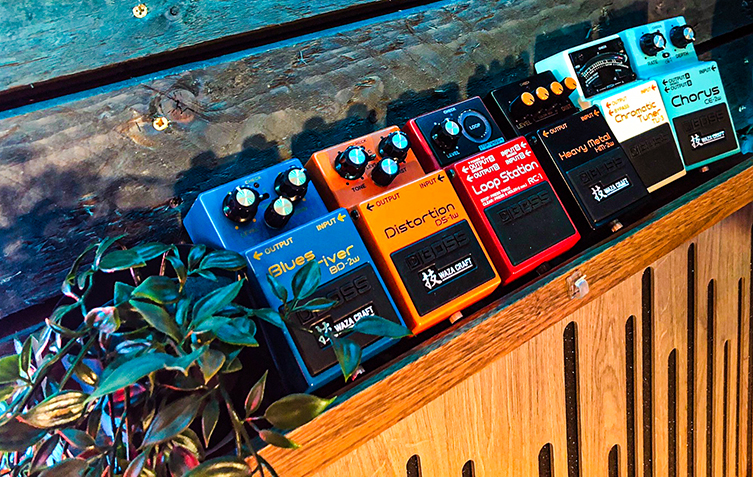
What Guitar Pedals Should I Buy?
This question is very closely linked to one we looked at earlier - what are the most essential pedals - in that personal taste and musical requirements really come into play here. What I think is an essential pedal might not be to your taste, regardless of my years using and selling such devices.
Now, that is all true but I still have to recommend some pedals for you to try! I’ll keep this short and sweet, so you can do some further research if you’re interest is piqued:
Tuner Pedals
Overdrive/Distortion Pedals
Modulation Pedals
Time-Based Pedals
Multi-Effects Pedals
Have Fun!
The world of guitar pedals is a never-ending odyssey of fun, so enjoy the journey! It’s always interesting to try new pedals, change the combinations and order of your pedals, and just explore! You’ll develop opinions, preferences and new ideas about effects the more you use them, too.
Dip your toe into the waters with some affordable effects pedals, and go from there. Why miss out?


